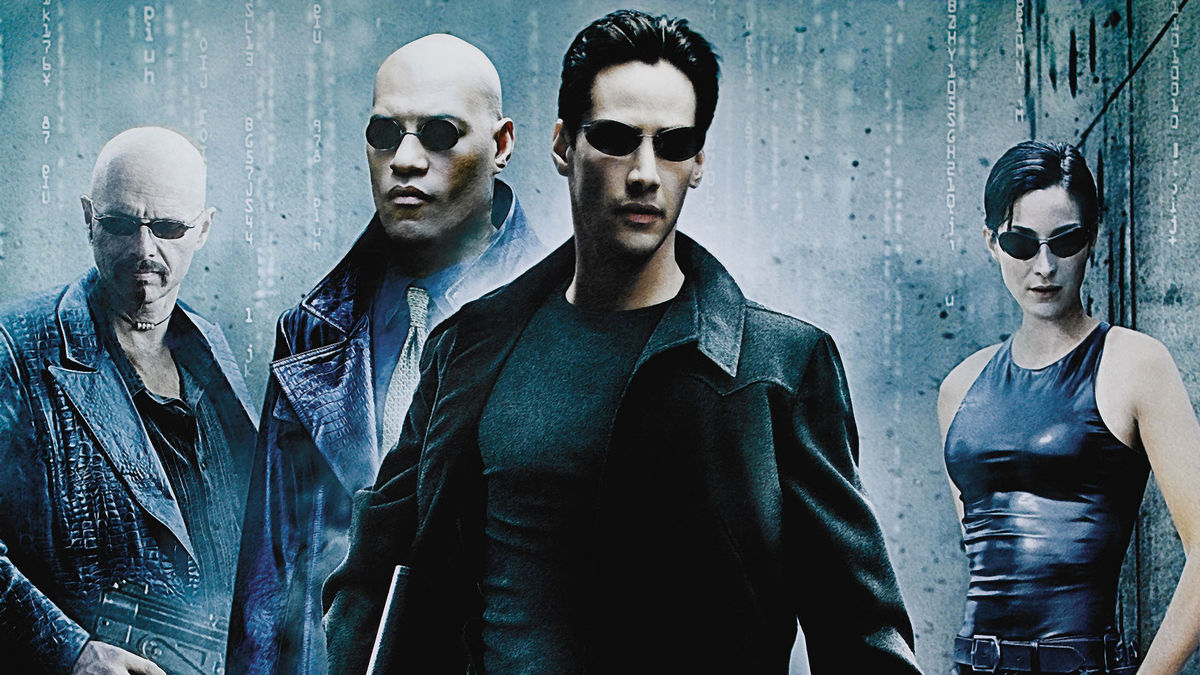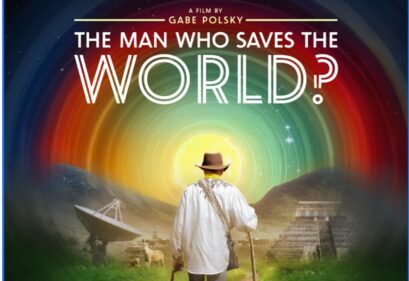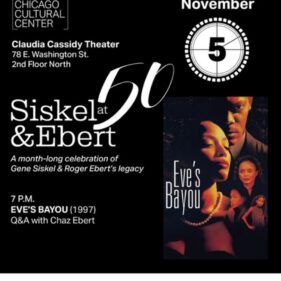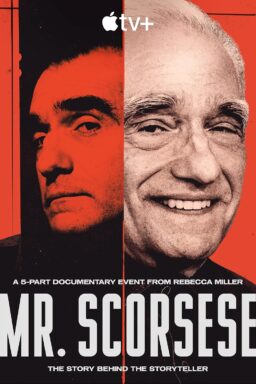Give me two hours a day of activity, and I’ll take the other 22 in dreams – Luis Buñuel
I lived and breathed kung fu in 1999, and oh, how I envied Neo of “The Matrix,” who did not have to wake up at 5 AM to do roundhouse kicks and thigh-burning “horse stance” on his parent’s lawn for a groggy hour just to keep up with the other fast, young, male students in his dojo. He could just download it, REM-sleep style, into his brain. That vicarious black belt-itude wasn’t the only reason I saw “The Matrix” eight times in the theater that summer. It was a sweetheart box of chocolates addressed, it seemed, specifically to me, a bespoke cyberpunk confection rich with a dollop of everything I loved: postmodernism, Gnosticism, industrial techno, virtual realities, black latex, Keanu. I got fired from my third graphic design job that summer, and with the severance pay that should have gone towards my student loans I instead bought a patent leather zippered tank top and matching skin tight pants, and stalked around sci-fi conventions as Trinity every chance I got. “The Matrix” was a rare, exquisite, paradoxical, unprecedented beast—a multi-million blockbuster cult film—and I was absolutely in its cult. But 20 years later, in a world shaped by the aftershock of its promises, how does it look to me now?
If I was attending a high school reunion, my first, unconscious curiosity would be about how my sophomore crush had aged—and likewise, the first thing on my mind revisiting “The Matrix” was “What about the bullet-time scene?” To my delight, it holds up: Neo’s back-bending, arm-flailing evasion of bullets rippling through the air around him is still thrilling, visceral, and dreamlike, and doesn’t show any technological seams. That virtual camera, 360-degree circle around a hero in motion is now standard cinematography for action movies, such as the full-circle swirl around T’Challa as he crouches atop a speeding vehicle in “Black Panther”’s Busan chase sequence. (“The Matrix” may be also the first instance of the “crotch flip” shot also seen in “Black Panther, “Spider-Man 2,” and I’m sure you have an example too, where the viewer stares down upon an action hero doing a groin-exposing backflip while something dangerous careens beneath them.) “Black Panther”’s effects team could use CGI for every element of that shot, but in 1999 only way to create the “bullet time effect” was to borrow a page from Muybridge: create a flexible camera rig with a still photo camera mounted on each vertebra, snake its track around a green screen stage, and fire each shutter off in sequence during the action so that the single frames could be stacked like a digital flipbook.
Photographing a real subject means capturing the folds in their clothes, the luminosity of their skin, and the motion of their muscles to a degree of reality that an algorithm’s best guess can never quite match. “The Matrix”’s dependence on real environments creates a “virtual” world that’s textured and sensual: the brick of crumbling buildings, the distortions of mirrors and chrome, the thick weavings of wires and ducts running in the shadows of the Nebuchadnezzar, the graffiti carved and scrawled on city surfaces, the weathered leather of a wingback chair, and those fetish-y, sleek, oil-slick couture Kym Barrett costumes, an infinite texture of black on black. It is a movie that straddles the change from celluloid to digital cinematography, branding it with an absolutely unique mise en scène, just like its “adventures in cyberspace” forebearer “Tron,” which combined black and white photography, matte painting, rotoscoping, backlight animation, and primitive CGI to create a movie that doesn’t look like any other movie. (And if there’s any doubt that one was an influence on the other, watch “Tron” all the way to the end credits. I can’t take credit for noticing this—my friend Mouse pointed it out—but all the scrolling kanji names of the Chinese animators who did most of Disney’s cel animation grunt work look like the raining jade mojibake of the Matrix’s source code.)

But despite how the actual machine code of the Matrix is represented by text, “The Matrix” is shockingly illiterate. So much of how we experience the Internet in 2019 is via tweets and texts—it’s atavistic how the written word has no (bit)coin in this realm. All these characters are elite hackers, and yet their interactions with this program are within its “physical” reality, not in front of a terminal trying to undermine it via reprogramming. In the very first moment we meet Neo, when he’s merely “Thomas Anderson,” pixelated newspaper headlines scroll up his screen—but he’s sleeping, eyes closed, in front of them. The few lines of text that appear on his monitor to lure him to the door utterly shock him. The friends who greet him there shrug at how they’re late—in this world, there’s no such thing as a “be there in five” text—and the contraband they’ve come for is hidden in a hollowed-out book (Baudrillard’s Simulacra and Simulation) that’s now merely a stash box. Even the other crew members on Morpheus’ ship who have access to the endless scrolling code of the Matrix say they don’t so much read the katakana as just intuit the text holistically: “blonde, brunette, redhead.”
In The Alphabet vs. The Goddess, polymath cultural critic Leonard Shlain puts forth an iconoclastic treatise about how literacy destroyed women’s place in ancient societies. As he explains it, pre-literate societies experienced reality foremost with the right brain— experientially, holistically, simultaneously, and ecstatically—and their orgiastic bacchanals and goddess-centric rituals reflected that. Literacy, because it requires linear thought (experiencing something in sequence from left to right, rather than all at once like a painting) and abstraction (experiencing both the symbol “a” and the sound aaah as the same thing) prioritizes the left brain. And as cultures gained literacy—meaning the majority of its members prioritized left-brained thinking in their everyday lives—those goddess-connected right-brained means of experiencing reality became devalued, along with the women who embodied them.
It is low-hanging (and overly reductive) fruit to view all the Wachowskis’ work through the lens of how both have both transitioned from male to female since 1999. But their movies have always valued the feminine, and there is a large female cult following for films like their lesbian heist noir “Bound,” or the intergalactic mess of “Jupiter Ascending,” which despite its shortcomings—and boy, are there a lot of them—is secretly adored by a large, mostly invisible legion of fannish women. I didn’t have the words to describe “toxic masculinity” and “the male gaze” in 1999, and so I didn’t realize how—or why—“The Matrix” was resonating so deeply with me. But now I see how “The Matrix” is formalistically a feminine movie, full of sanctums, portals, penetrations, and wombs, and how Neo may be the most feminized male hero of any action movie.

I’m an unabashed Keanu apologist, but the first time out he tried this cyberpunk thing, in “Johnny Mnemonic,” he was a novocaine-faced disaster. Reeves is not a stupid person, or a stupid actor, but in the hands of the wrong director who doesn’t work his subtle strengths, it can sure look that way. The Wachowskis knew how to bring out what’s best about him—namely, the naïf who is simultaneously adrift in, and perfectly suited for, an unmapped territory. Ultimate “stranger in a strange land” Neo has only 80 lines in the first 45 minutes of “The Matrix,” and more than half of them are questions? Which, is, like, the defining characteristic? Of the feminine “uptalk” identified by linguist Cynthia McLemore? He’s referred to as “Alice” (“down the rabbit hole”) and “Dorothy” (“because Kansas is going bye-bye.”). His ordeal in this movie is full of penetrations: by the cybershrimp “bug” the agents insert into his navel, by acupuncture, by the gagging hallucination of a molten mirror flowing down his throat, by swallowing the red pill, by bullet wound, by the respiratory apparatus and dozens of other plugs that keep him alive in the factory uterus he’s birthed from, by the brain probe that allows him to jack into the Matrix. (The wince and shluuuck sound of that jack is familiar to anyone who’s had a speculum removed.) Reeves, as lean, fit, and handsome as he’s ever been in his career, is very much an object of desire, with Cypher taunting him for having “big, pretty eyes” and The Oracle remarking, upon first meeting him, “You’re cuter than I thought … I can see why she likes you.” And he is rescued from death by Trinity’s declaration of love as she hovers over his inert body like how the Prince hovers over Sleeping Beauty, as his virtual self suffers through the final showdown at the Heart o’ The City hotel.
Carrie Anne Moss’ Trinity is thought of as the most important female character in “The Matrix”—and it’s true, she is extraordinary, the cool, serene, lethal yet vulnerable rebuttal to the semi-feral hacker gal archetype exemplified by Lisbeth Salander in “The Girl With The Dragon Tattoo.” She’s no Manic Pixel Dream Girl. But on re-viewing it’s clear the greatest female character in “The Matrix” is The Oracle. She appears in Neo’s life exactly at the movie’s midpoint, where a protagonist switches from learning who he is, to learning whom he can become—and the throwaway moment at the beginning of their scene together defines the second half of the movie. When she warns him “Don’t worry about the vase,” he turns, accidentally knocking it to the ground and fulfilling her prophecy. It’s not that he already is The One—she tells him so after making him “open his mouth and say aaaah,” another of Neo’s orifices open at someone else’s disposal. He becomes The One because he chooses action, to rescue Morpheus because Morpheus has faith that he would—and the circular, paradoxical moment with the vase places the first splinter of this possibility in his mind. Most hypermasculine action stars progress to the final showdown motivated by “Someone must pay” or “I must prove myself.” Neo’s catalyst is a vase, penetrated by pretty flowers.
But for a movie that so honors the feminine, it ignores the possibilities inherent in children—and that’s where it starts to show its age. Why, if The Oracle’s waiting room is filled with kids who have independently discovered a crack in the world’s reality, like the monk child who advises Neo that “there is no spoon,” why is Morpheus not cultivating and recruiting them for his revolution? He’s putting all his eggs in The One’s basket, rather than anticipating the crowdsourced, Wikified future we now inhabit. Children who were really that age in 1999 are now Millennials who seamlessly navigate the liminal virtual space we all live in, an idea that the “my reality or the highway” Morpheus can’t even imagine, let alone get behind.

That’s part of why “The Matrix” lost so much of its fanbase after its confusing and disappointing sequels and didn’t become an enduring sci-fi franchise. (In our current culture, it now exists mostly as a metaphor for awakening to a terrible truth and becoming galvanized to fix it, whether it’s the alt-right slang “redpill,” meaning to see the lies in progressive political thought, or PETA’s themeatrix.com that exposes the truth about factory farming.) Its polarized view of reality vs. illusion didn’t jibe with how technology was moving us towards a merging of realities, of an existence mediated by smartphones and social media and augmented reality and video games, where analog and digital versions of us exist in parallel. The computer program of the Matrix could enslave millions of humans in a hallucinatory reality, but it can’t conjure up a simple game of Pokemon Go.
To be fair, the Wachowskis built a clever failsafe into the inevitable embarrassment that prognosticative sci-fi always suffers, by declaring the world of the Matrix is circa 1999—hence, its lack of smart phones and wireless technologies. That makes logical sense in the plot, but it’s impossible to revisit the movie 20 years later without being struck by the gaps in its conception of how the internet would move from connecting individuals (as it was in 1999) to empowering (or weaponizing) groups. “The Matrix” clings to the suspicious Luddite dehumanization tropes of a former generation of science fiction, and distrusts the very human necessity of dreaming, both literally (for the health of our brains) and figuratively (to give us hope and stretch our creative powers). The sequels should have been about humanity finding a mature equilibrium between the necessities of reality and the human hunger for dreams—how technology is an essential expression of, not a destructive influence upon, our true toolbuilder nature. We the viewers couldn’t get behind a revolution that showed us an infinite dreamscape of proto-“Fortnite” wish fulfillment and then declared we should eschew all its tantalizing glamour—Guns! Black latex! Kung Fu!—in favor of a principled existence wearing tattered sweaters and eating slop beneath a ruined Earth. No one goes to the movies to be tut-tutted that fantasies and visual pleasure can only hurt us, not enrich us.
But even with that scolding now visible to me, I still love “The Matrix.” What lingers isn’t its fears, but the beauty, and the possibilities, of its goth industrial lucid dream. We’re still feeling out the protocol for how to navigate this new virtual space without undoing ourselves, but because of the impression “The Matrix” made on me so long ago, I’m still an optimist about the internet, even with all its befouled corners and zombie mobthink. It’s still a fertile place where our hungry tool builder and dreamer impulses can roam free inside “a world without rules or controls, borders or boundaries,” as Neo promises at the movie’s conclusion. We’re luckier than Neo to have it. I’m still waiting on the kung fu, though.











